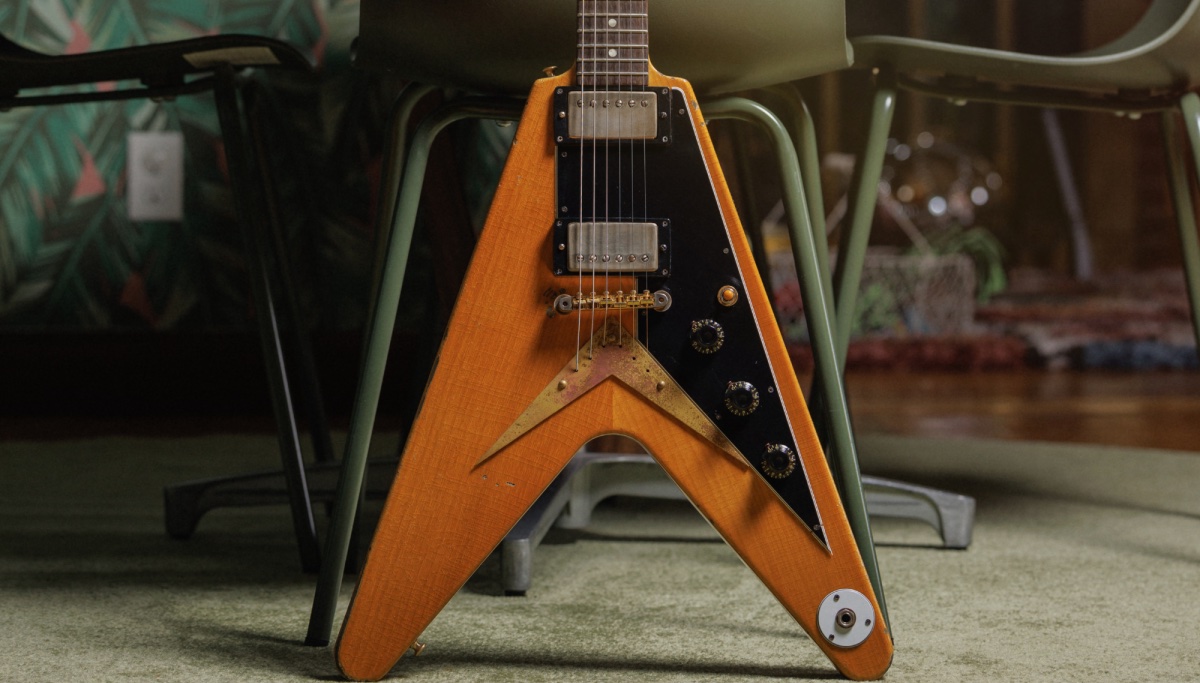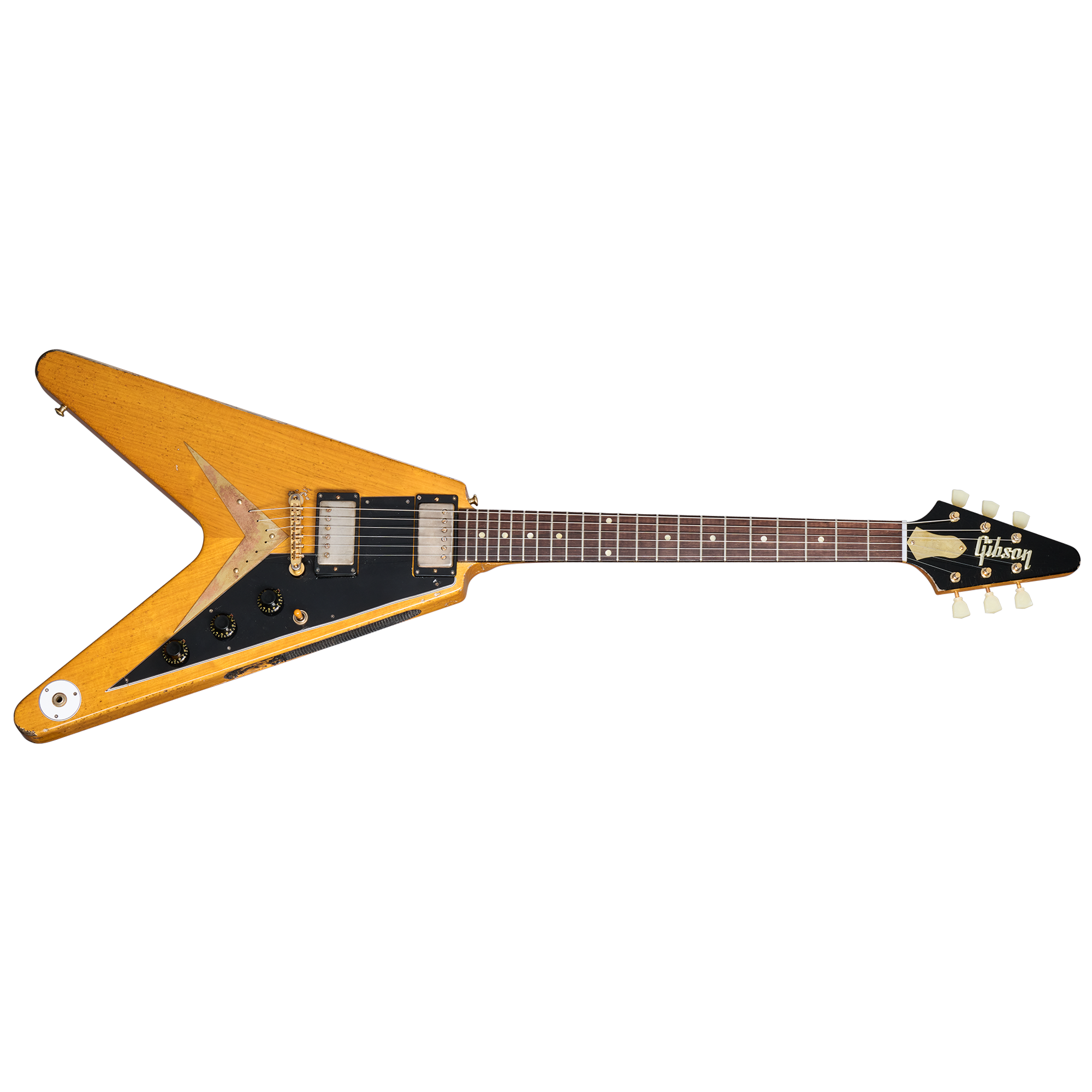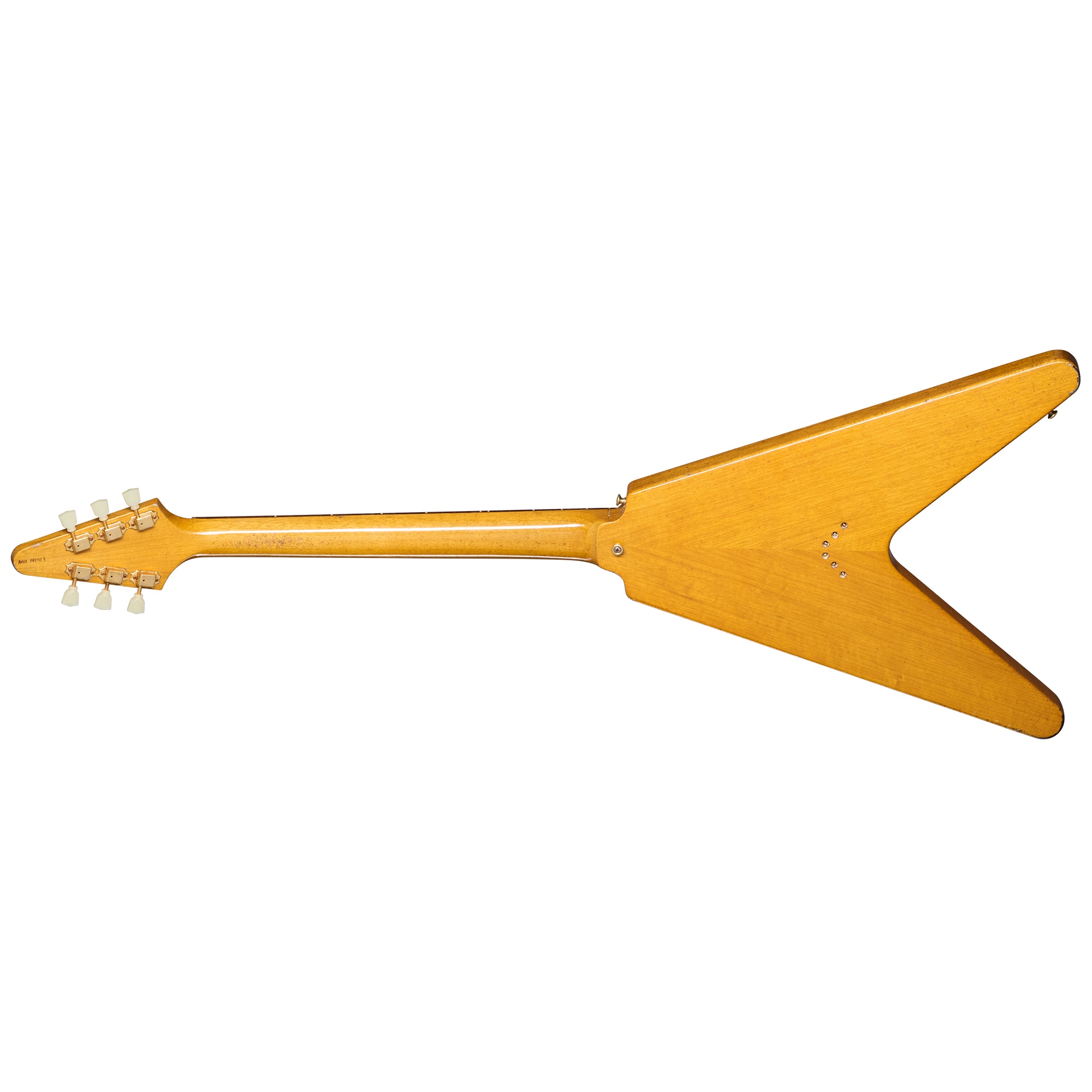
Just last week, Joe Bonamassa appeared on the Gibson Gear Guide show, recounting the origins of his relationship with Epiphone, and why the blues guitar ace and world-renowned vintage guitar collector (and sleuth) chose to work with the company on more accessible takes on some of the most prized electric guitars in his collection.
That partnership most recently (and by recently we mean last week) produced an $849 take on his extremely rare Copper Iridescent 1955 Les Paul Standard, for instance. But this week, we have something on the complete opposite end of the spectrum, a lavish, exacting, Murphy Lab-aged recreation of Bonamassa's legendary “Amos” Flying V.
A year and a half in the making, the Collector's Edition “Amos” replicates in molecular detail all of the storied original guitar's quirks, and is a much more upscale of the lower-cost replica Bonamassa produced with, you guessed it, Epiphone, in 2017.
Limited to just 50 examples, the Collector's Edition “Amos” V has the top-of-the-line perks you'd expect – a Brazilian rosewood fretboard, precision-engineered “Amos Custombuckers,” a two-piece Korina body and Korina neck, aged hardware that matches the original to a tee...
Aside from the luxury, though, the real attraction is “Amos”'s story, which could itself be the subject of a book.
First owned by a man named Amos Arthur – head honcho of of Arthur’s Music in Indianapolis, Indiana – the guitar subsequently ended up in the hands of guitarist Pete Mitchell, who played with Ernest Tubb. From there, it eventually ended up in the hands of Norman's Rare Guitars proprietor Norman Harris, with whom it remained for around 40 years, before its sale to Bonamassa just under a decade ago.
During its time with Harris, the “Amos” V appeared in a number of vintage guitar books, and, amazingly, This is Spinal Tap.


Even amongst as rare a breed as '58 Flying V's, “Amos,” according to Bonamassa, stands out, and for more than just its backstory.
For one, a massive chunk of the original's skid plate somehow fell off, it has a black pickguard and a white input jack, and it has an extra strap button. For their time, Bonamassa says, the humbuckers were also unique.
“Not all humbuckers are created equal, especially in '57 and '58,” the guitarist said on a new episode of the Gibson Gear Guide. “You have to remember, they were just rolling those things out – sometimes they're really woofy in the front and really bright in the back.
“Amos is pretty balanced – it's got a nice clean tone in the front, and it barks in the back.”
“It's every bit as good as a Flying V of old, except you don't have the liability of bringing out a unicorn guitar,” he added.
Writing about “Amos” in his Guitar World lesson column, Bonamassa said, “‘Famous Amos’ is an historic guitar, but not because of my association with it. There’s a provenance to this guitar, and I suggest that you do an Internet search of ‘Amos Flying V.’
“You’ll no doubt come across a picture of Amos Arthur, the proprietor of Arthur’s Music Store, holding the guitar in 1958 and seemingly thinking, ‘What the hell did they just ship me, and how am I going to get $275 for it?!’”
In keeping with the many hours that went into creating each of the 50 examples set to be produced, the Gibson Joe Bonamassa “Amos” 1958 Flying V Collector's Edition rings up at a cool $19,999.
For more on the guitar, visit Gibson.







